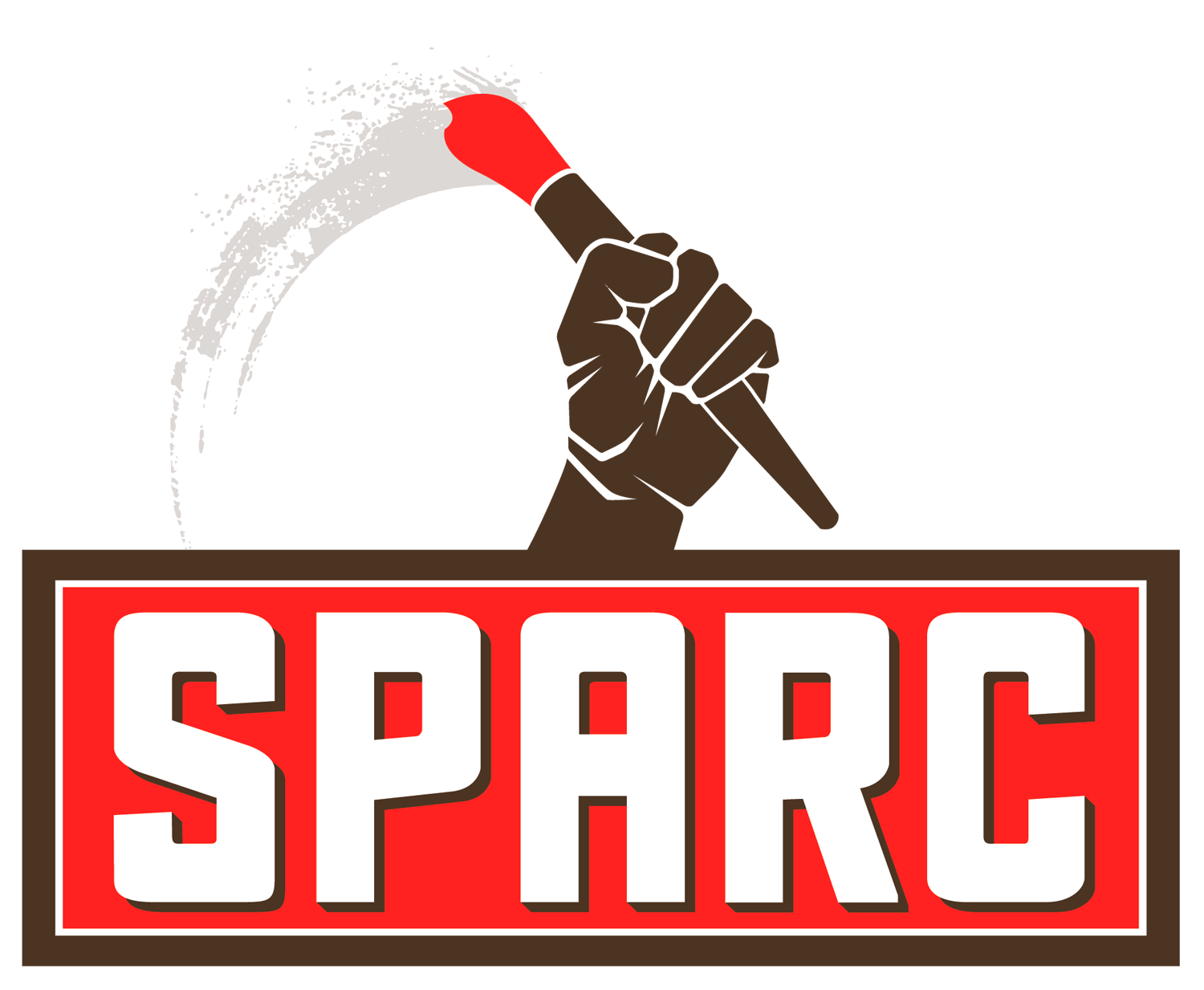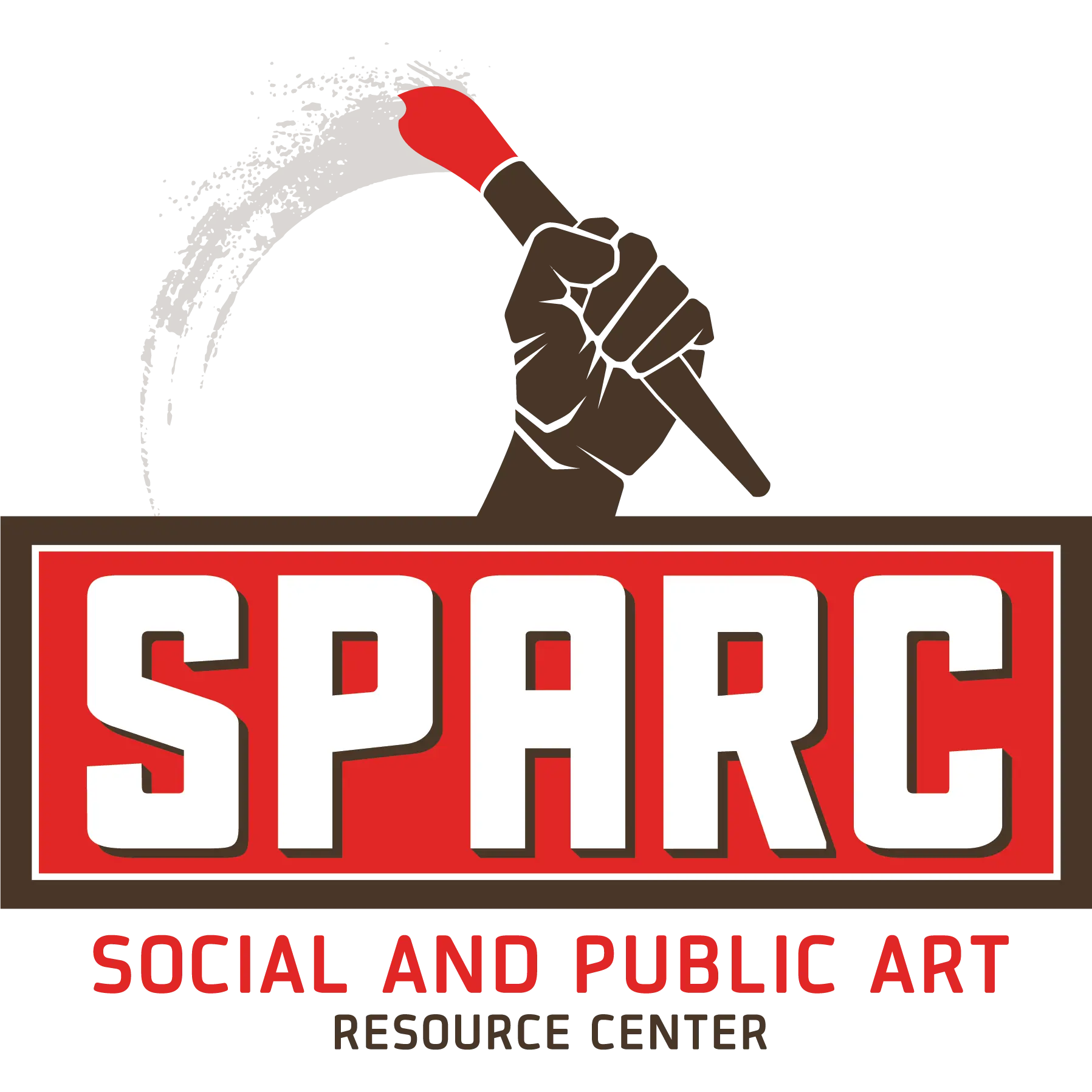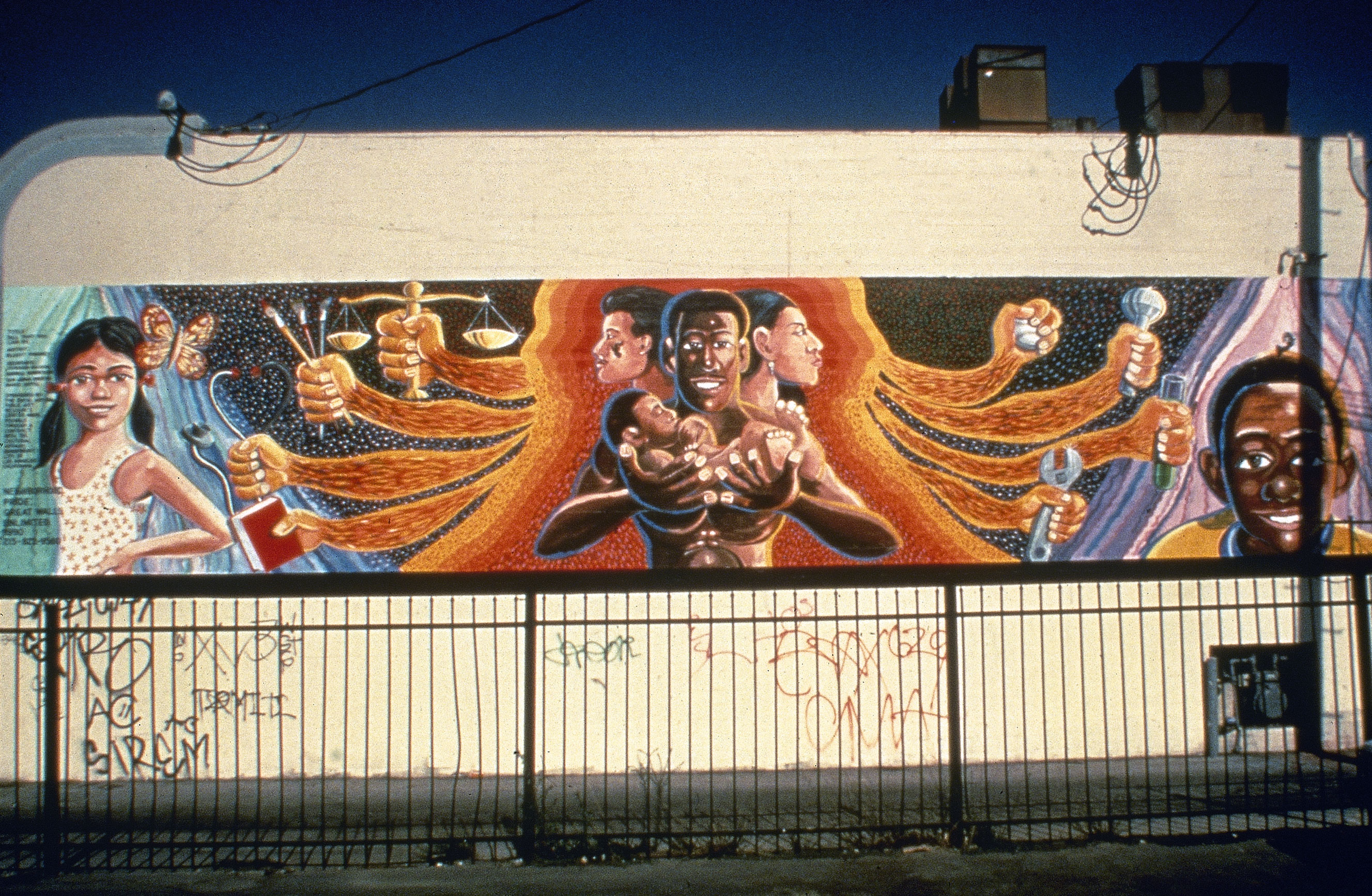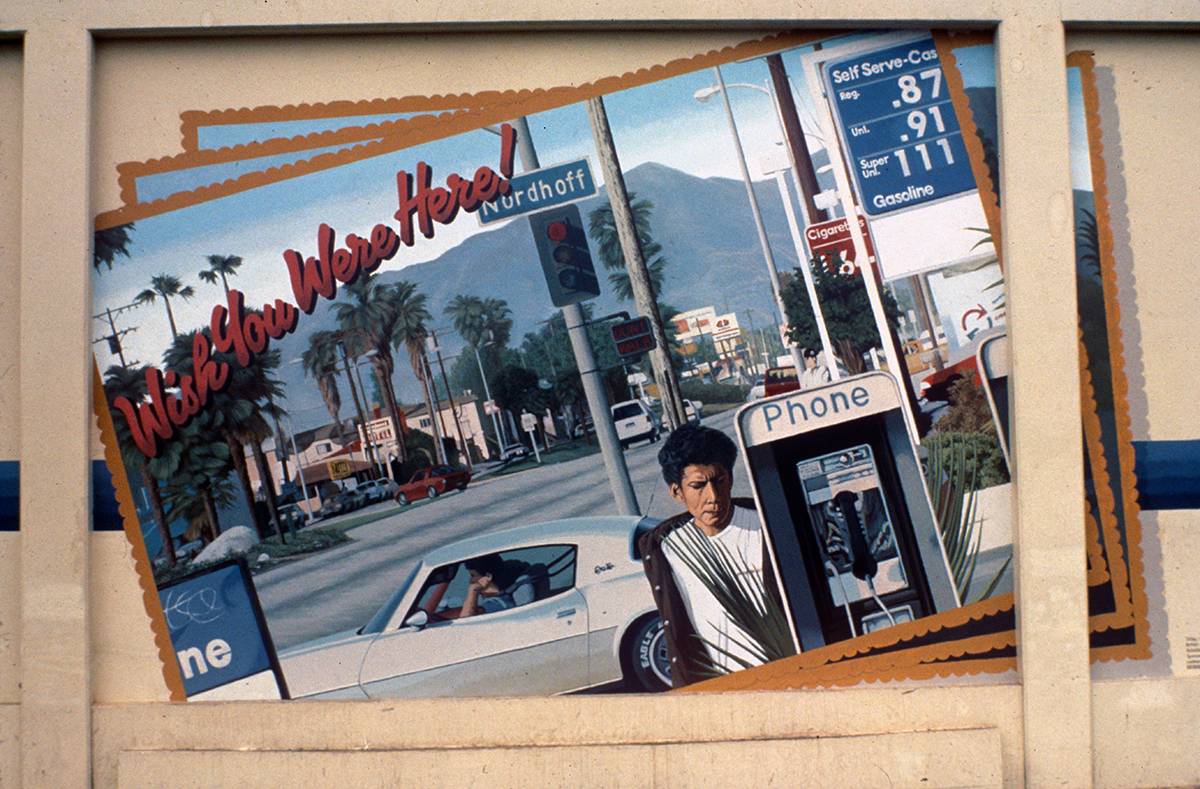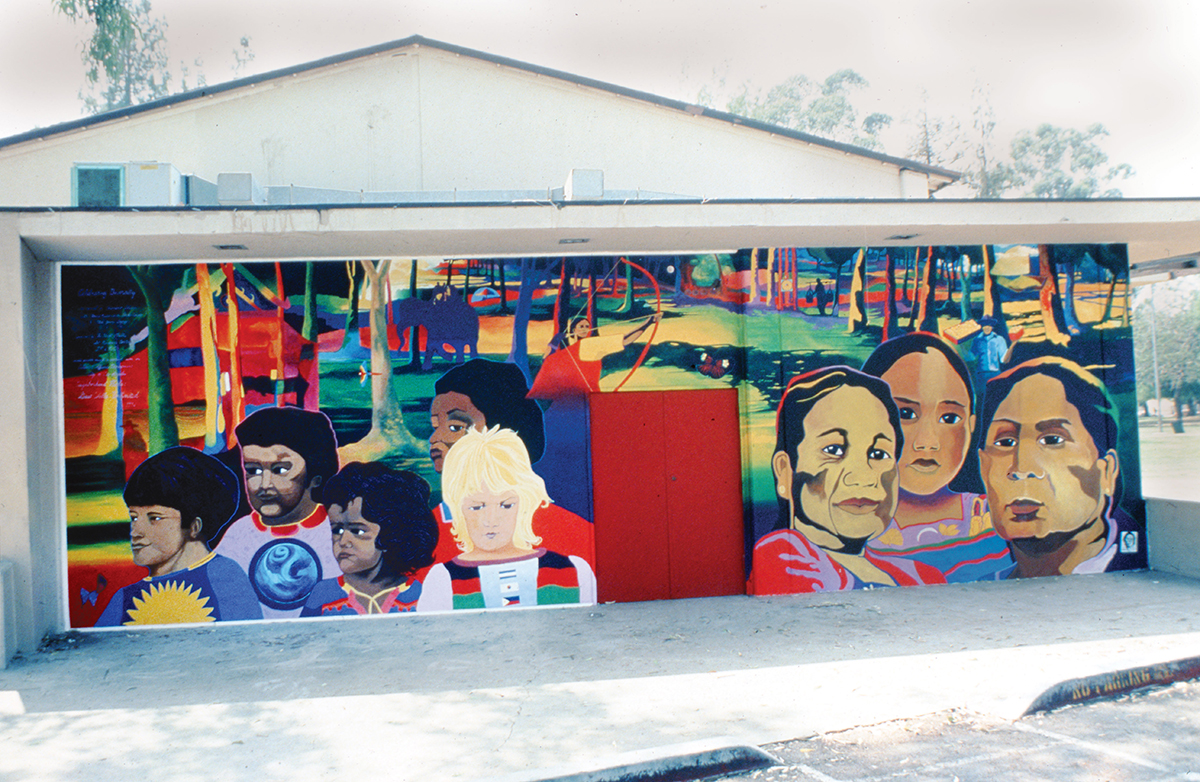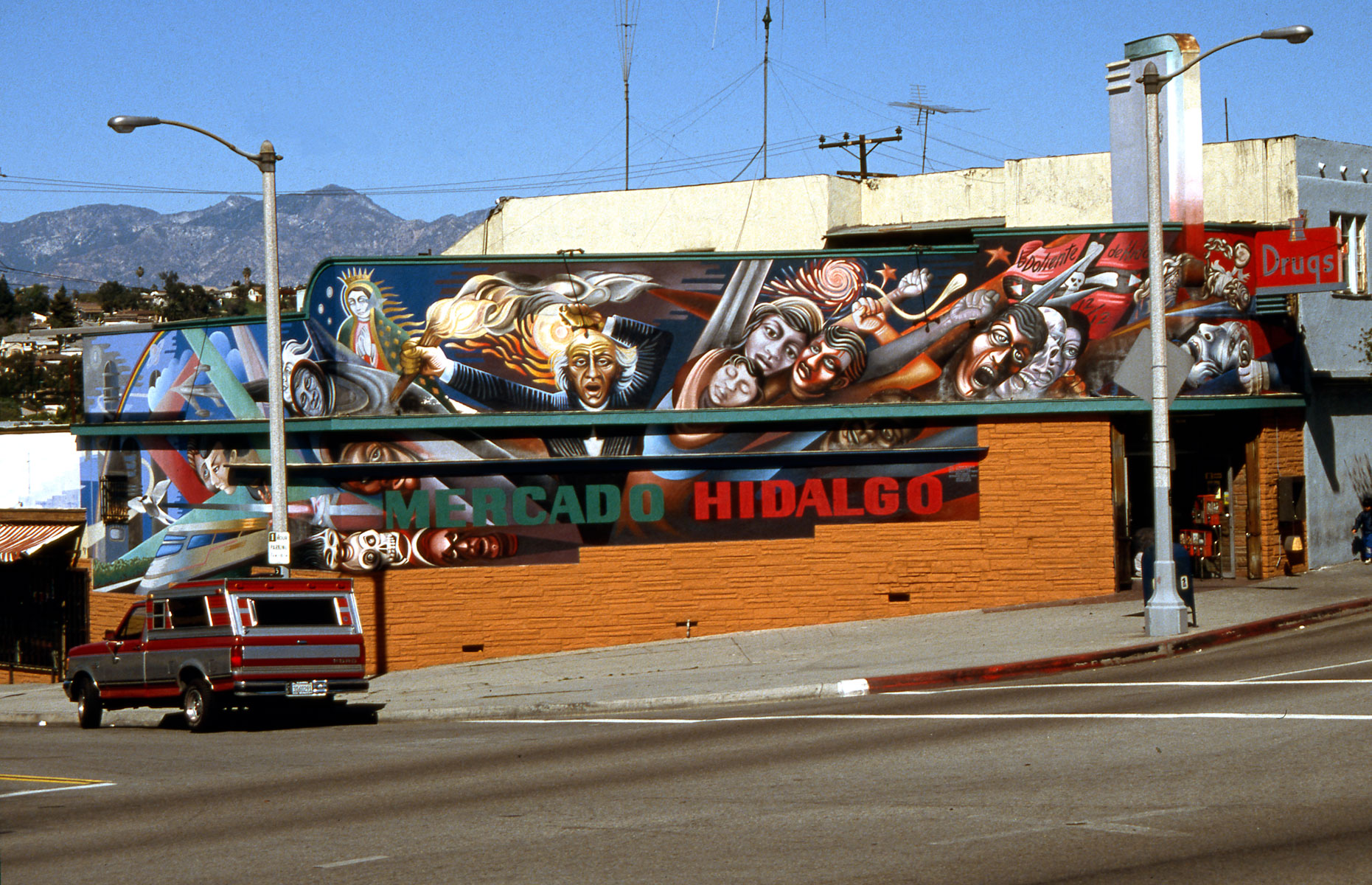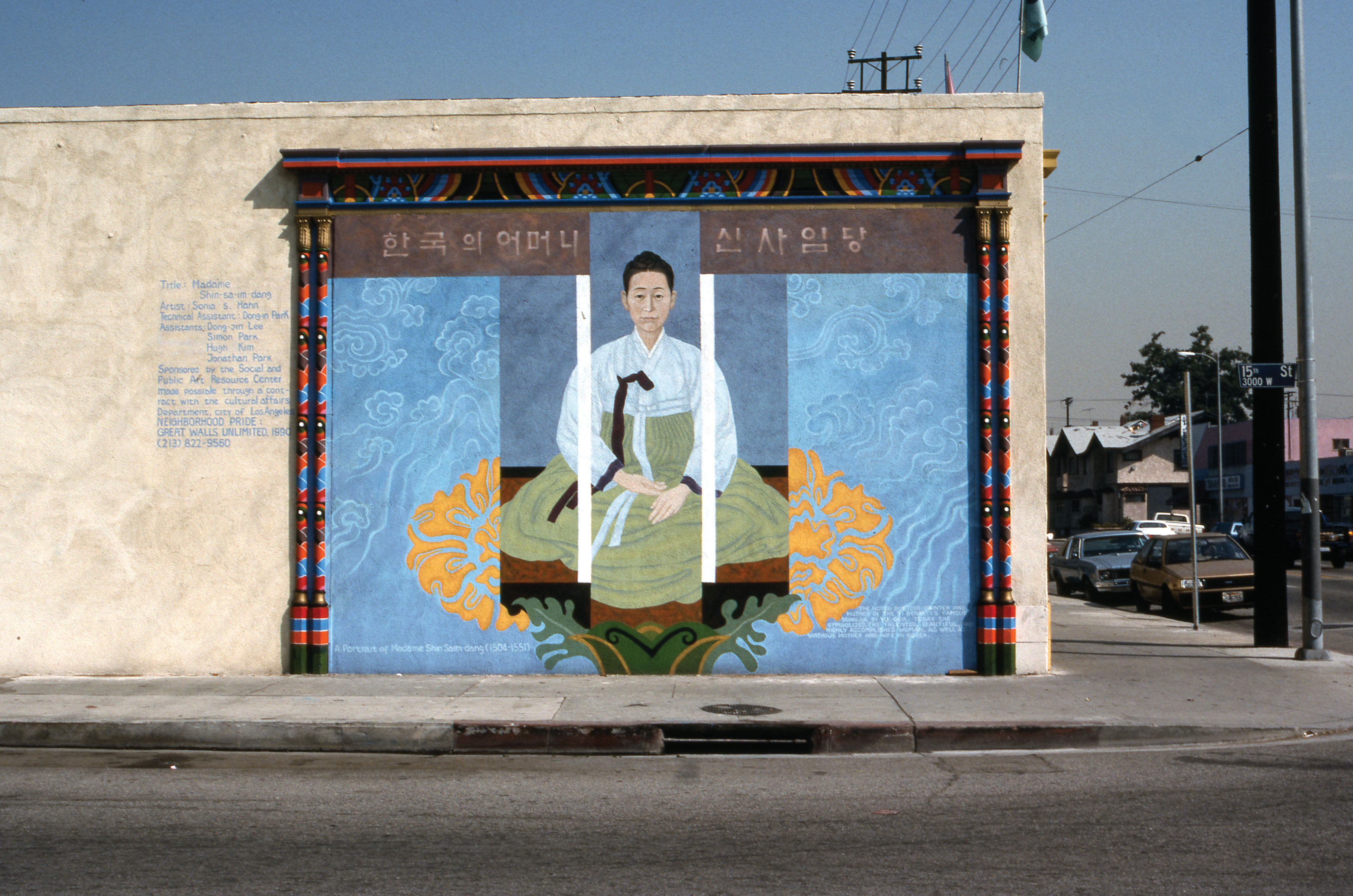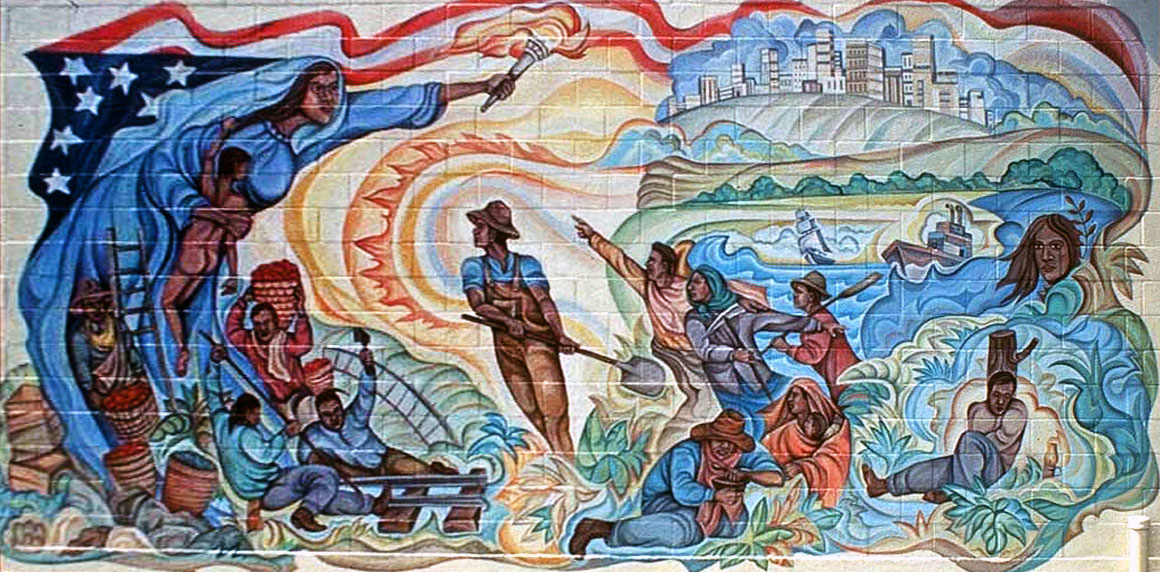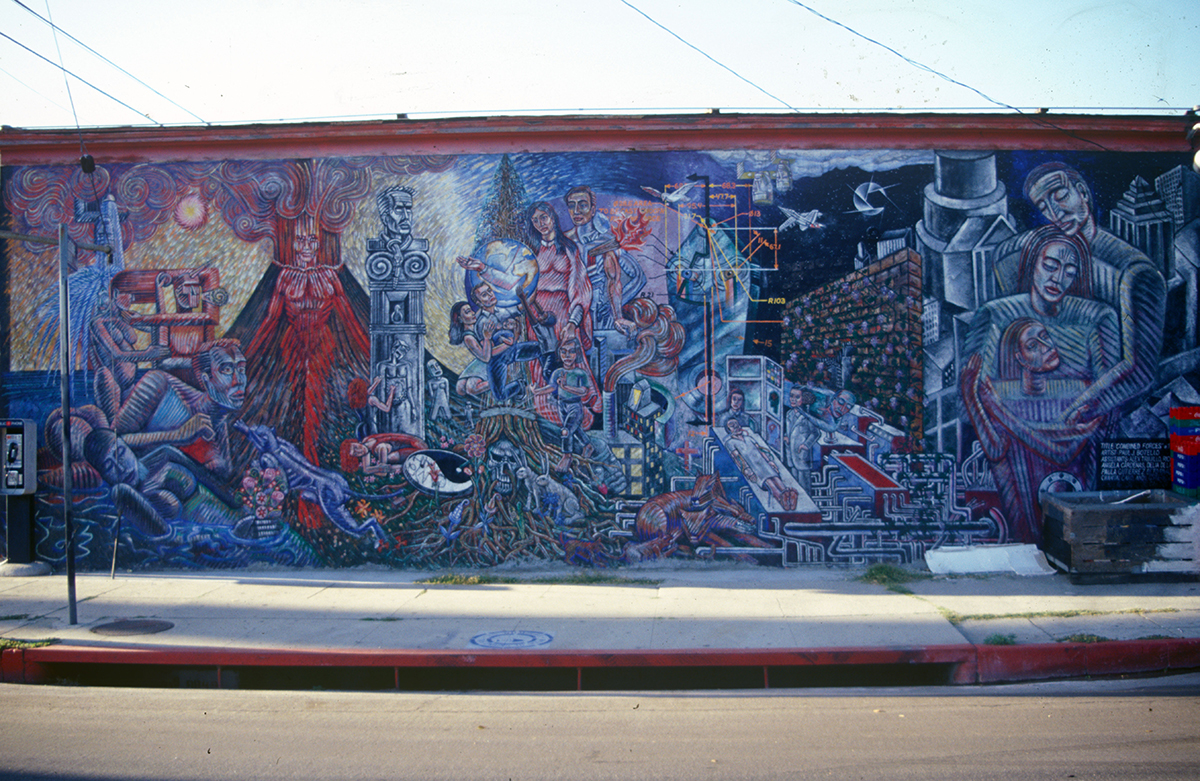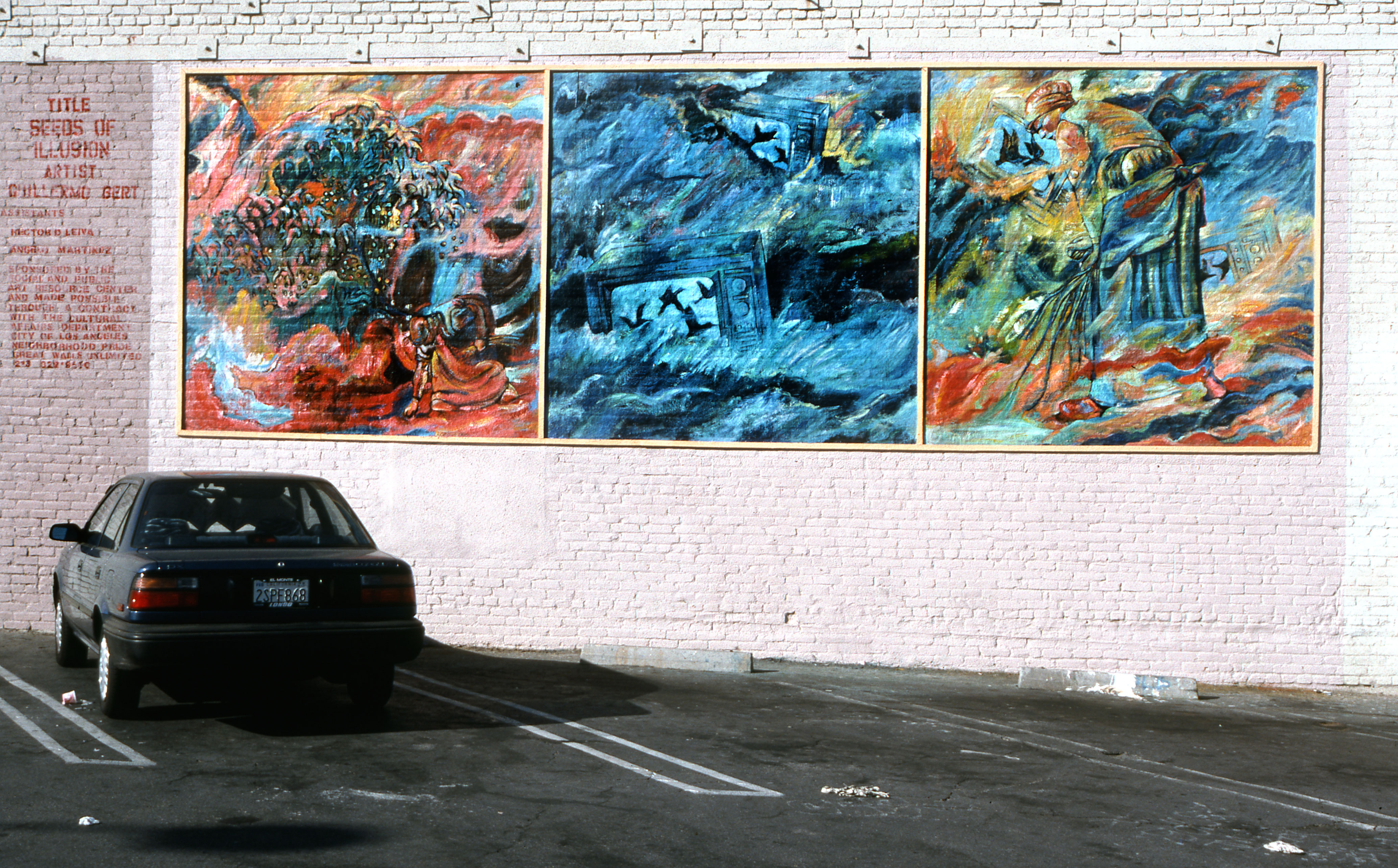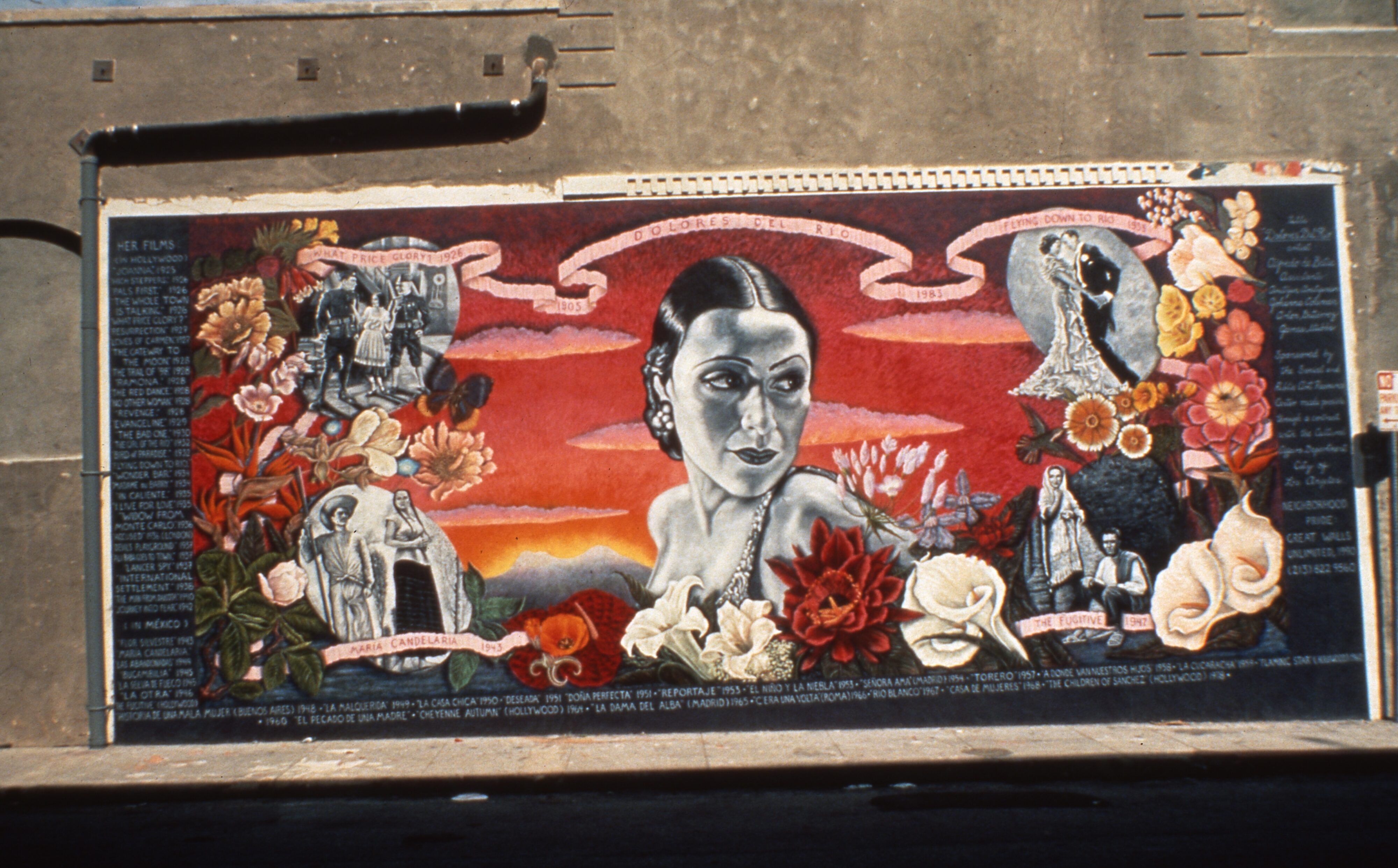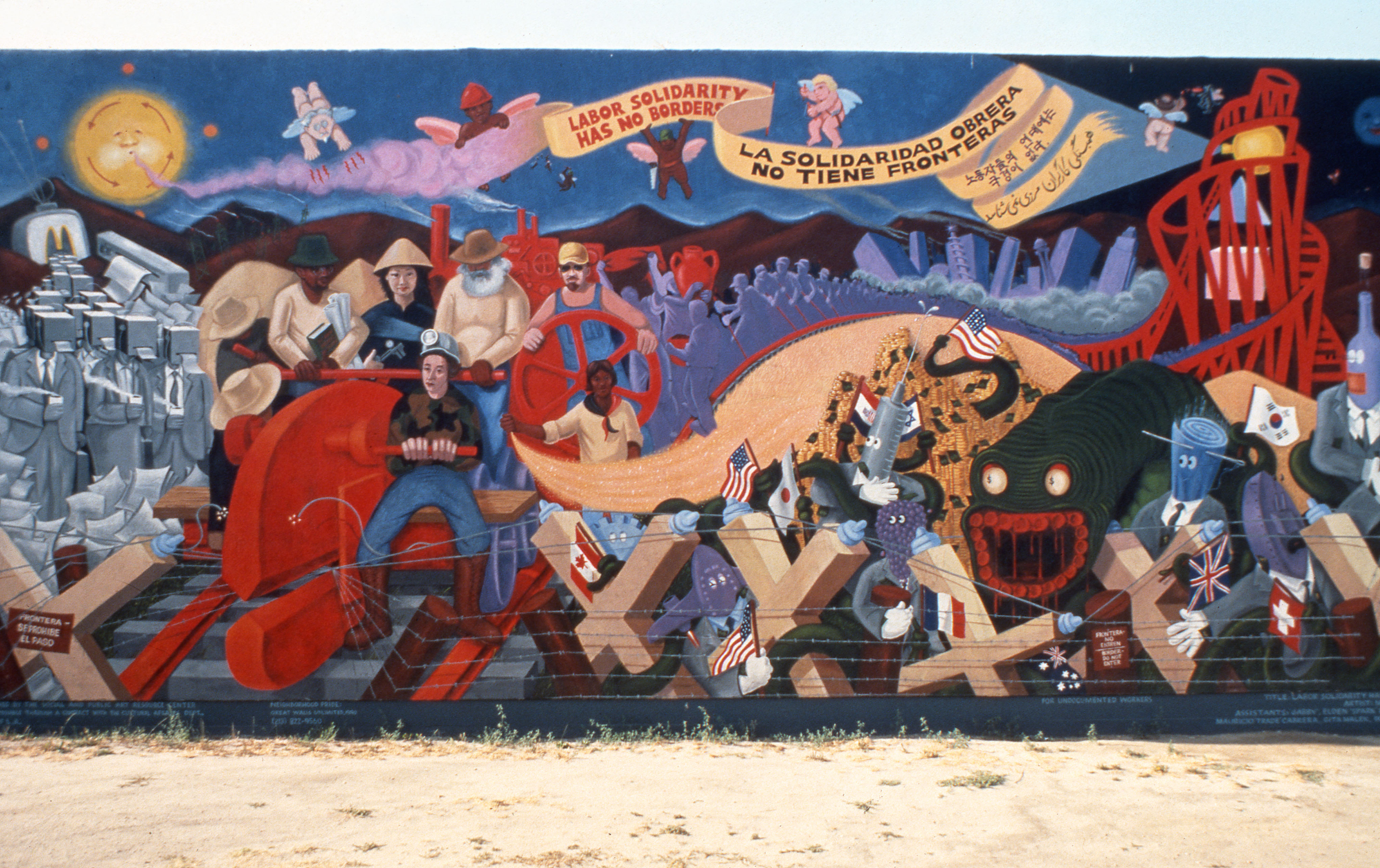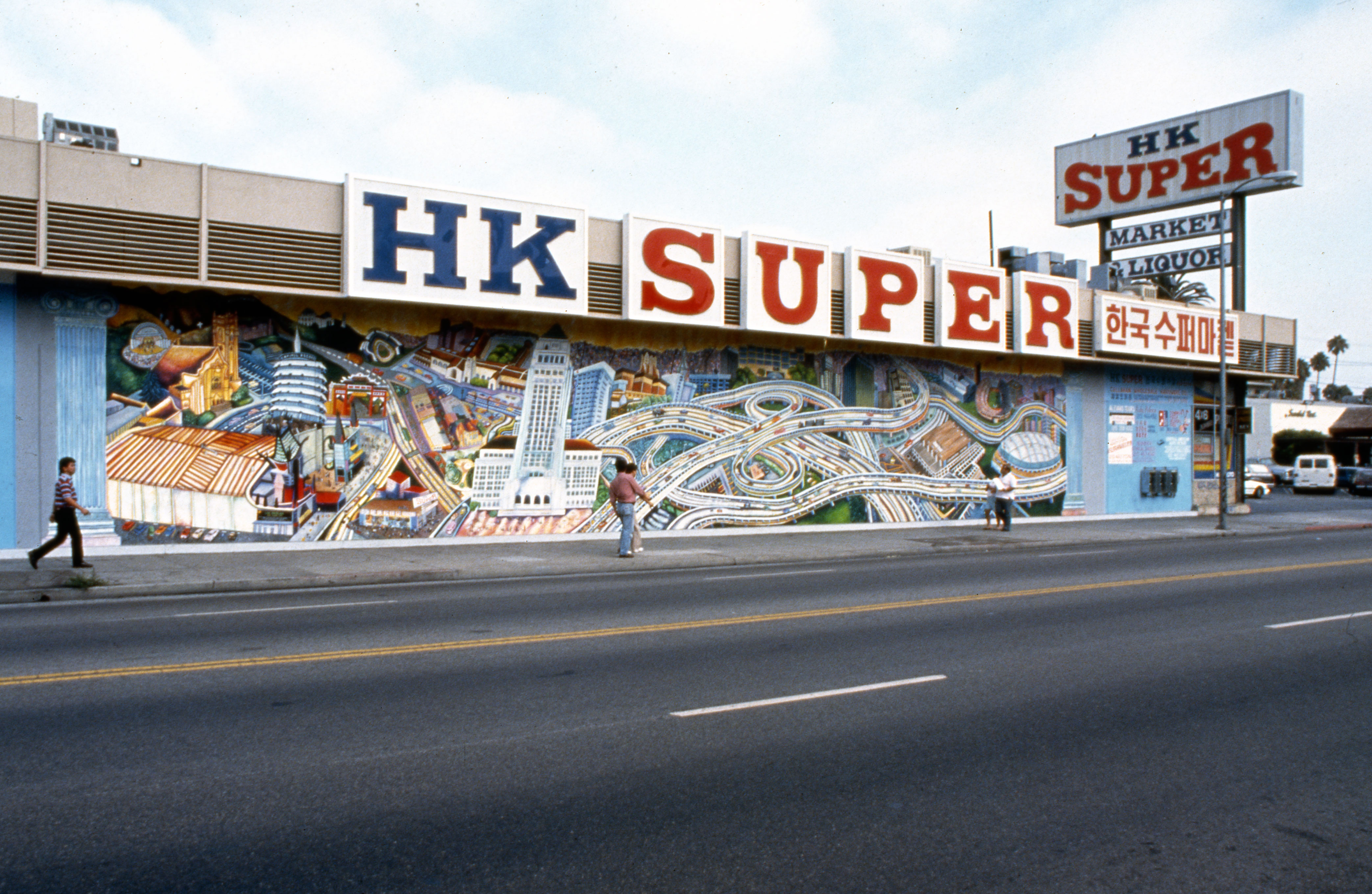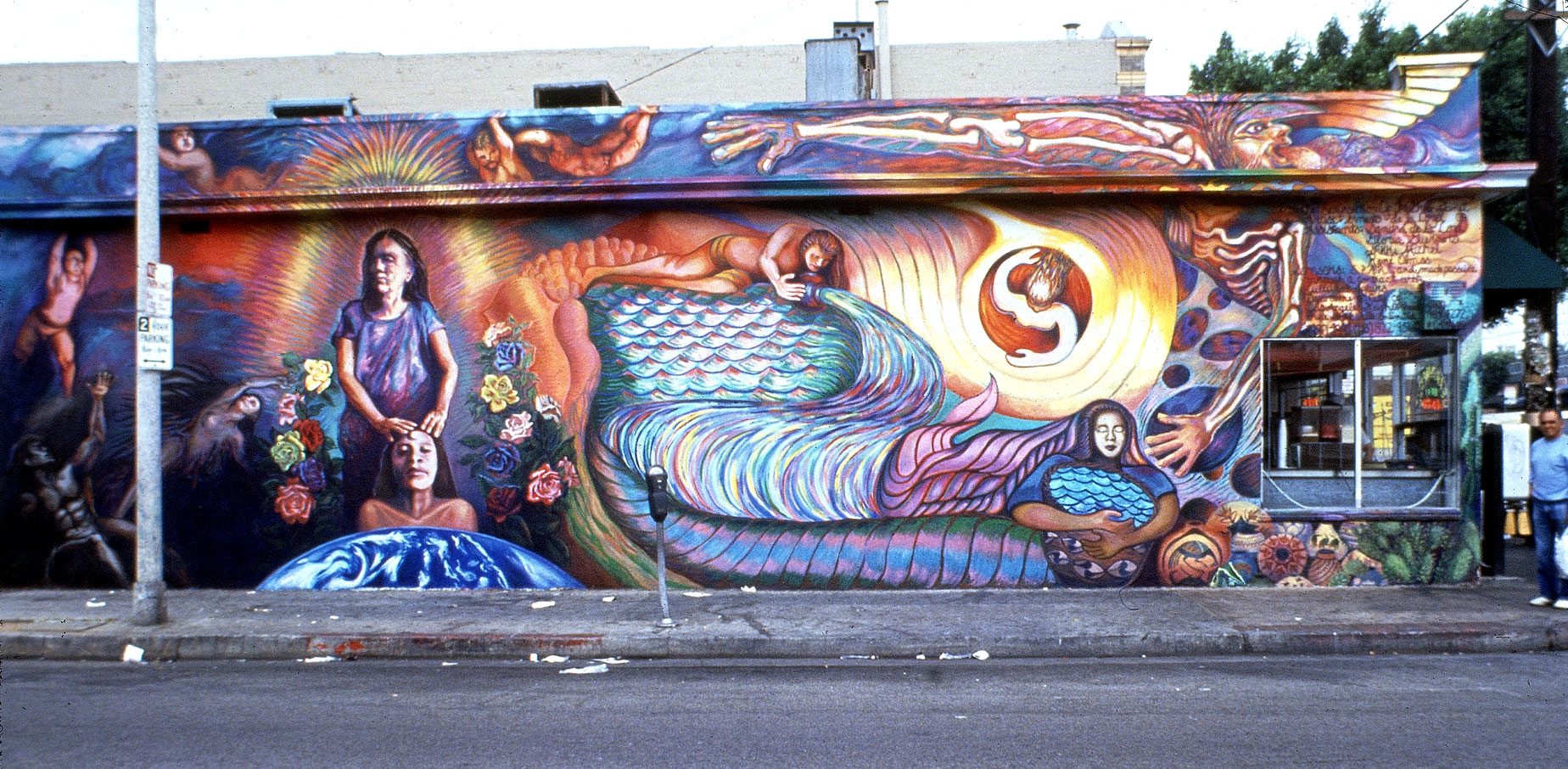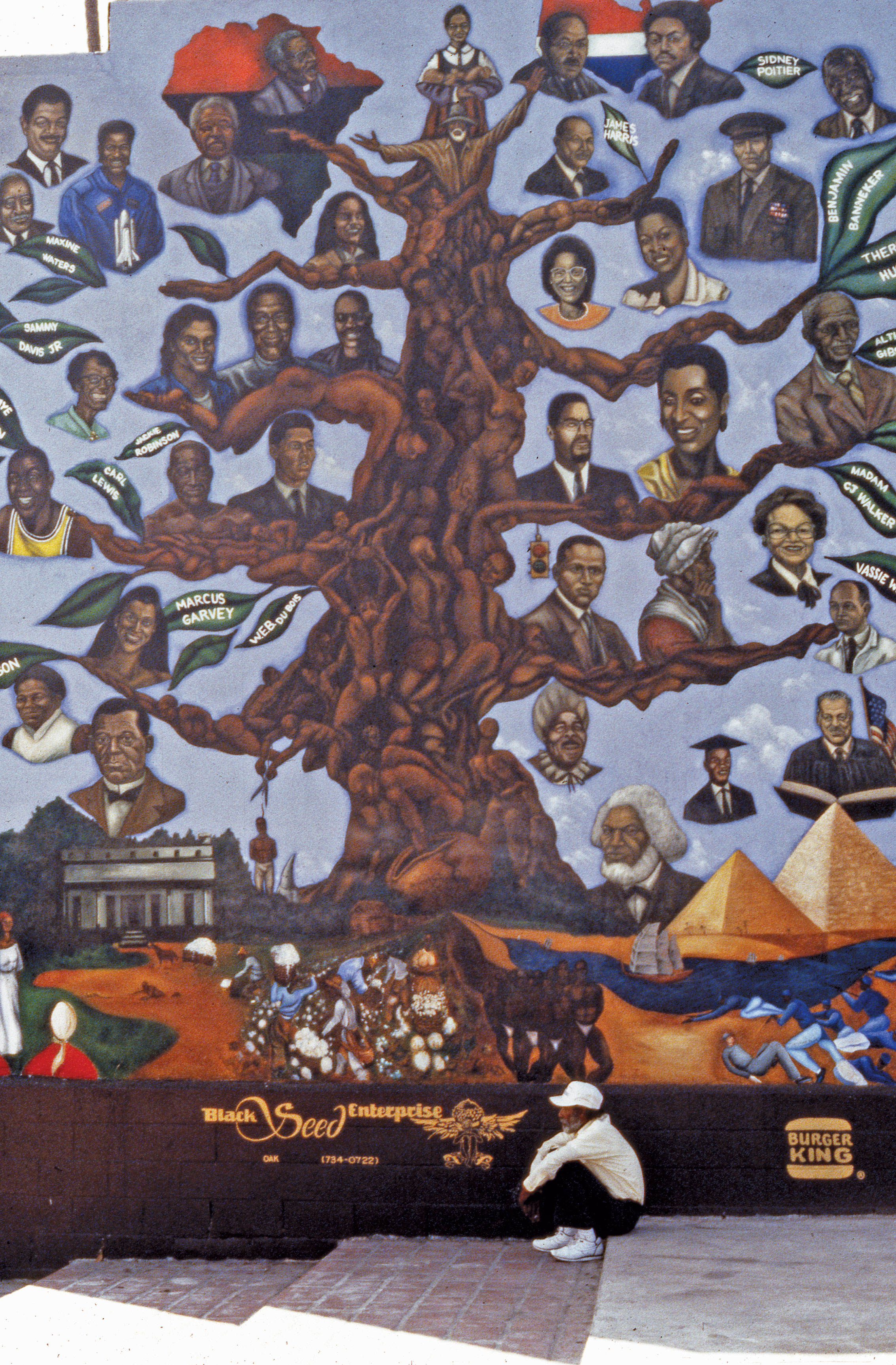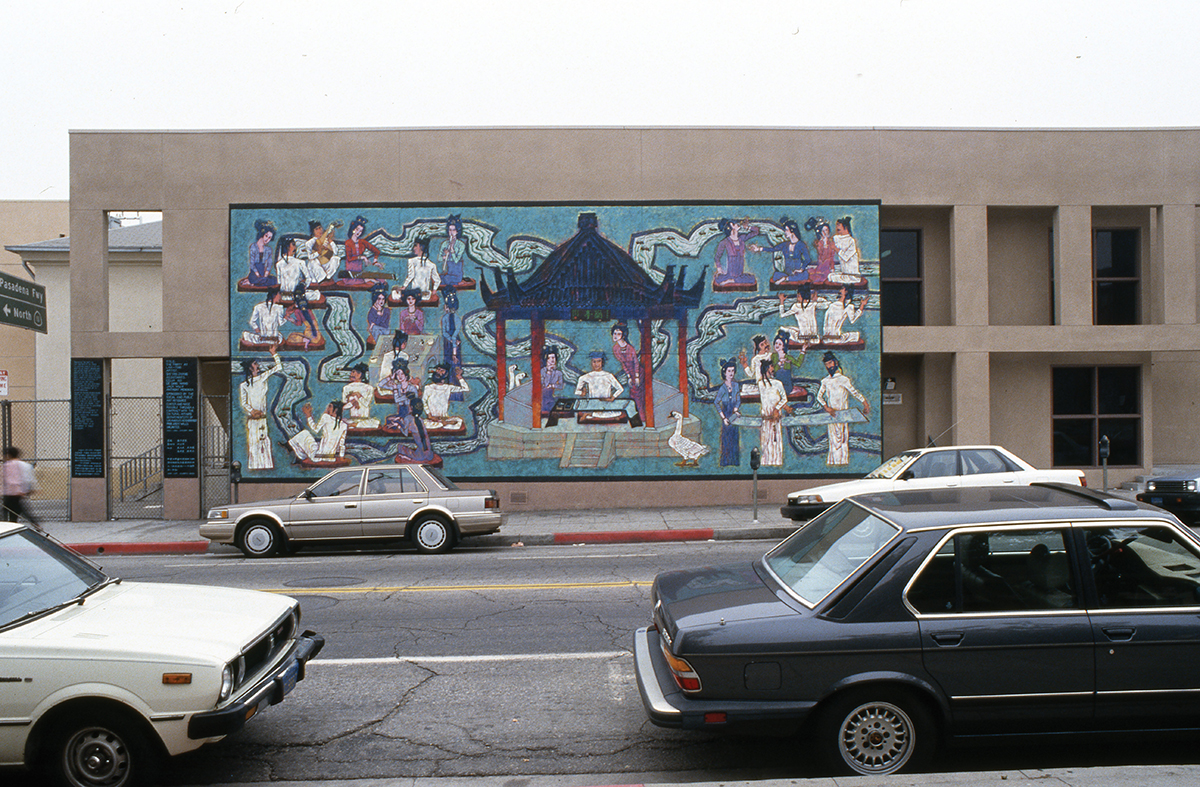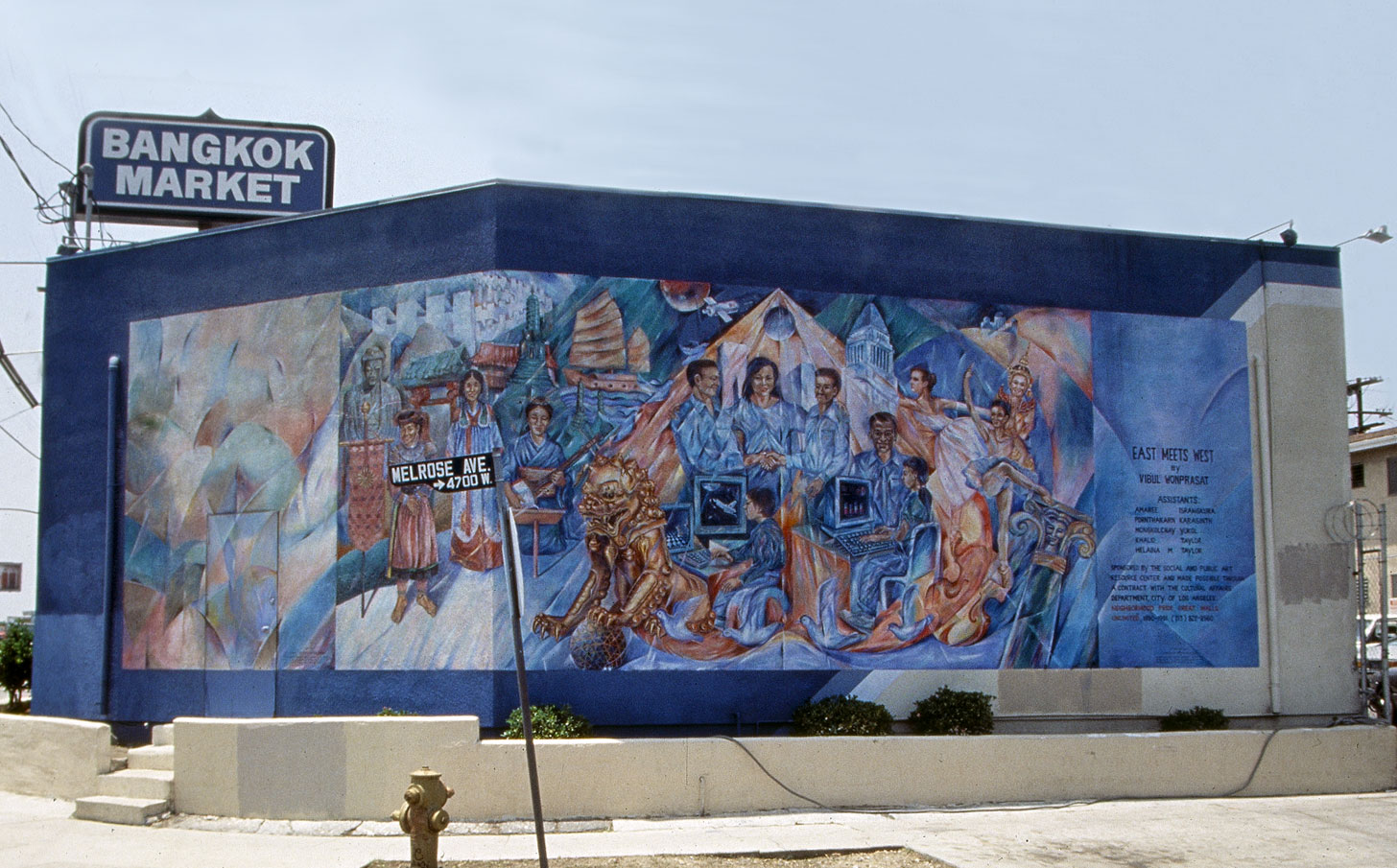Neighborhood Pride
All That You Can Be (1989) by Elliot Pinkney
| Location | Legal Aid Foundation (Exterior), 8601 South Broadway, South Los Angeles. |
| Artist | Elliot Pinkney has been creating inspirational imagery since the early 1970s. His visions of hope and conscience have been created across southern California. He moved to Southern California after serving in the U.S Air Force. He earned a B.A. at Woodbury College Magna Cum Laude. He lived in the community of Compton for 20 years and in the early 1970s was active at the innovative community arts school called Compton Communicative Arts Academy. Funded by a special grant from the California Arts Council, he completed eight murals. Their themes were African-American pride and the importance of understanding between different culture, sadly, all three murals are now gone. |
| Subject | “It’s a mural that I designed to help motivate the youth by visualizing viable and positive alternatives. I would like to encourage the youth s much as I can through my work” – Elliot Pinkney The mural portrays a father cradling a newborn baby that represents the future generations. Around him are extensions of eight hands outstretched to help those in need, each hand contains some symbol to represent different areas of achievement that can be had and the possible future careers awaiting the child. It is a positive statement for the potential of all children. |
| Status | This mural has been completely whitewashed. |
Wish You Were Here (1990) by Arthur Mortimer
| Location | 9053 S Sepulveda Blvd, Los Angeles, CA 90045 |
| Artist | Arthur Mortimer is considered one of the originators of the mural movement in Los Angeles. Mortimer’s first mural was painted on the side of his house in Santa Monica in 1971. He has collaborated with Terry Gilliam and sits on the board of directors for The Mural Conservatory of Los Angeles. |
| Subject | One of his signature postcard pieces, the mural depicts a scene from the immediate neighborhood. |
| Status | This mural was completely whitewashed. |
Celebration of Diversity (1989) by Francisco Letelier
| Location | Lanark Park, 21816 Lanark St, Canoga Park, CA 91304 |
| Artist | Letelier was born in Santiago, Chile. His family left Chile in the wake of the military overthrow of the democratically elected Salvador Allende Government. His father, Orlando Letelier, was assassinated by a car bomb in Washington D.C. in 1976. Francisco and his brother José, along with Chilean painter René Castro, formed “Brigada Orlando Letelier,” painting murals in 12 American cities and traveling to Nicaragua in 1980 to paint five more as part of a national literacy campaign. |
| Subject | The mural depicts several generations of immigrants from varying ethnic cultures. |
| Status | The mural and building were destroyed to construct a condo development. |
La Doliente De Hidalgo (1976/1990) by Willie Herron
| Location | 4301 City Terrace Dr, Los Angeles, CA 90063 |
| Artist | Herron grew up in East Los Angeles. He took drawing courses at the Otis College of Art and Design and the Art Center for Design as a high school senior and started doing murals in 1972. The Same year he began to collaborate with artists Patssi Valdez, Gronk and Harry Gamboa Jr.–a collaborative that explored the line between muralism and performance art. They called themselves Asco (“me da asco” means “it makes me puke” in Spanish). He currently resides in Orange County where he co-owns a successful commercial design studio. |
| Subject | The title of the mural translates to “The Sorrow of Hidalgo.” Originally from Spain, Father Miguel Hidalgo was a leader of the Mexican Independence movement. In 1810 Hidalgo led a group of indigenous and mestizo peasants in a brief revolt against the dominant peninsulares under the banner of the Virgin of Guadalupe. Hidalgo was ultimately captured on March 21, 1811 and executed on July 30th. Hidalgo’s rebellion was the beginning of what would become the Mexican War of Independence. Although he was unsuccessful in his original aim, Hidalgo’s efforts were followed by those of José María Morelos and Augstín de Iturbide, who bought down the Spanish Colonial Government of in México. The mural depicts the original cry of the Mexican Indian/mestizo for freedom, justice, and democracy against the rule of Spain. Symbolically, the mural attempts to address the increase in Latin-American contributions to the present and future that is shaping and redefining Los Angeles. This mural in East Los Angeles is not only about history. It’s about giving people the inspiration to go out and do the impossible when it’s necessary. |
| Status | In 1990 The Los Angeles Festival and the Los Angeles Department of Cultural Affairs teamed up with SPARC to sponsor Herron’s partial restoration of the mural. |
Madame Shin Saim-Dang (1989) by Sonia Hahn
| Location | 1325 South Western Avenue(Mural on 14th Street) |
| Artist | |
| Subject | |
| Status | This mural was destroyed in a complete site renovation. |
Contribution of Minorities to the Progress of California (1989) by Orlando Castillo
| Location | Beverly at Harvard Hollywood |
| Artist | Born in the Philippines, Castillo studied art at the University of San Tomas. From a young age he wanted to be an artist but his traditional parents felt it was their duty to choose a career path for their four children. However, the young artist was determined to waylay their plans of making him into an architect. To support his studies in fine art, Castillo undertook commercial art, even doing fashion designs at the age of 15. Always very political, Castillo views himself as a social realism artist-which has gotten him in trouble at times. He was imprisoned during the Ferdinand Marcos dictatorship for distributing political prints, posters, and flyers to field and factory workers. “Artists don’t belong to any country. The artist’s work must reflect the community he lives in” –Orlando Castillo |
| Subject | This mural shows the U.S., represented as a woman with a torch, welcoming immigrants to help build California. Coming to America, or finding one’s place in america, is one of the many themes muralists concentrate on in L.A. The struggle for survival as migrant workers, their perseverance in preserving their cultural knowledge, and their aspirations and dreams in this country are some prominent themes shown. The mural depicts the ways in which immigrants from his country and from other places in Asia have contributed to the economy and culture of California. Dimensions: 10′ x 20′ |
| Status | This mural was completely whitewashed. |
Combined Forces (1989) by Paul Botello
| Location | 2000 Eastlake Ave, Los Angeles, CA 90031 |
| Artist | “I have lived in East Los Angeles for all my life. I am a third generation Mexican American, eighth of nine children, whoe lives among neighbors whose kids are first generation and because of this I feel my heritage around me like a blanket giving me a sense of comfort and community. Living in the Twenty-first century I am very aware of the multi-cultural world that I am a part of, and so from this context I feel my art should reflect this diversity yet come from my unique perspective and schema.” -Paul BotelloThe artist was only eight years old when he began helping his older brother Daivd paint murals. He studied at Cal State Los Angeles, where he earned both a BA and MFA. His work can be see throughout East Los Angeles and Southern Claifornia, as well as the permanent collection of the Hammer Museum and the Laguna Art Museum. “My theme and design will deal with the duality of humankind. It will also deal with the human condition and the issues concerning crimes against humankind. As an artist I feel I can reflect these images of reality. I am concerned with revitalizing and rejuvenating the community spirit. By painting a mural I plan to contribute my talents as an artist to a community in which I was born and raised” –Paul Botello |
| Subject | The harmonic clash between technological progress and the reactive environment is displayed in this mural. Botello portrays his ambivalence toward technology through a dangerous network of pipes, which are shown expanding beyond the sites of medical miracles and urban development to encroach upon nature. The volcanic eruption and torrential downpour on the left are balanced with urban development, a study in designed chaos. The volcanic eruption also suggests that Mother Nature may get the last word. The overall mural depicts the merging of humanity and technology, as well as the joining of individuals in the struggle to create a better tomorrow. |
| Status | This mural has suffered from UV damage. |
Seeds of Illusion (1989) by Guillermo Bert
| Location | 1448 N Alvarado St, Los Angeles, CA 90026 |
| Artist | Guillermo Bert was born in Santiago, Chile in 1959. He holds an advanced Bachelor degree in Fine Arts from the Catholic University of Santiago. His work has been exhibited at and collected by numerous museums in the U.S. and South America as well as reviewed in major Newspapers in the U.S., Japan and Chile. Previously the art director for the Los Angeles Times, Bert’s work is a highly political critique on the media and consumer culture of America. |
| Subject | As a reoccurring symbol in this pieces, the TV set functions as the medium through which our society is controlled en masse. The left panel references the Hokusai print, the center shows TV sets surfacing among turbulent waters, screens filled with birds, and the right depicts an impoverished woman searching through detritus. |
| Status | This mural has suffered heavy graffiti and UV damage. |
Dolores del Rio (1989) by Alfredo De Batuc
| Location | 6529 Hollywood Blvd, Los Angeles, CA 90028 |
| Artist | Alfredo De Batuc |
| Subject | |
| Status | Small sections of this mural have are covered in gray paint; beauty mark has been added on upper lip with spray can. |
Labor Solidarity Has No Border (1989) by Mike Alewitz
| Location | 6120 S Vermont Ave, Los Angeles, CA 90044 |
| Artist | Mike Alewitz |
| Subject | |
| Status | This mural has suffered UV Damage and there are bits of graffiti throughout. |
The Living City (1991) by Sandra Drinning
| Location | HK Supermarket, 124 N Western Ave, Los Angeles, CA 90004 |
| Artist | An award-winning graduate of the University of Southern California–who is three-quarters American Indian. Drinning has exhibited her Prismacolor drawing at galleries in Santa Monica and Los Angeles. |
| Subject | The mural is a portrait of Los Angeles. Sites like the Watts Towers, Mann’s Chinese Theater, Olvera Street, and Beverly Hills are included int the piece. Freeways twist and turn throughout the mural, linking various neighborhoods. There are also hundreds of miniature portraits, among them such eccentric personalities as a Domino’s Pizza Man, a pimp in a feathered hat, a graffiti artist, a black Bart Simpson, and a homeless man who regularly hung out near the mural during its creation. |
| Status | Heavy graffiti covers most of the mural, and there is delimitation and fading. A restored reproduction, by SPARC, is currently displayed in the Peterson Automotive Museum. |
Resurrection of the Green Planet (1991) by Ernesto De La Loza
| Location | El Pavo Bakery, 2242 E Cesar E Chavez Ave, Los Angeles, CA 90033 |
| Artist | De la Loza has been painting since 2974 when he worked as a mural artist and project director at The Estrada Courts Housing Project, in Boyle Heights. Since then, he has created over 40 murals in the Los Angeles Area–8 of which are stil intact. The sacred and ritualistic nature of painting is of utmost importance to De La Loza, who believes that murals have healing powers for the the community. |
| Subject | The protection and Preservation of The Earth is the theme for this mural. The balance between healing and destruction in our relationship with nature is illustrated and echoed in the re-occurring yin-yang symbol permeating the design. The mural’s other title is “Tercer Piedra Desde El Sol” (Third Stone from the Sun). |
| Status | The mural has suffered delimitation, and fading; bottom sections of the mural have been peeled off. |
Black Seeds (1991) by David Mosley, Eddie Orr, and William T. Stubbs
| Location | 2301 W Jefferson Blvd, Los Angeles, CA 90018 |
| Artist | Mosley, Orr an Stubbs are the founders of the Shaw Park Muralists. Mosley is best known fo the millions of poster reprints of his work that have been distributed world-wide since the 1960s. An early involvement with gangs landed him in San Quentin Prison, where he got to know revolutionary George Jackson–who helped him redirect his life in a more community-minded and creative direction. Upon his release, he immediately enrolled in school, studying the technical aspects of art. He went on to teach and direct several art programs. |
| Subject | The concept was the idea of, Vietnam Vet and neighborhood activist, Gus Harris. Remembering how little he learned in school about African-American History, he decided that a creating a public mural showcasing some of the many heroic black individuals who have made important contributions to society would be an excellent way to inspire today’s youth.The mural’s central focus is a tree of life. A close examination reveals that painted into the flesh of both the trunk and branches are writhing and struggling human bodies. From each limb sprouts the proud face of an important African American. Next to “Black Seeds” a second mural of children on a see-saw. Many nationalities are present in this optimistic portray of multicultural cooperation. |
| Status | The mural was restored in 2009, and a few figures were added–including Barack Obama. Since the, the mural has suffered slight graffiti damage and the right panel has been painted over. |
The Party at Lan-Ting (1990) by Shiyan Zhang
| Location | 700 N Spring St, Los Angeles, CA 90012 |
| Artist | Shiyan Zhang was trained at the Central Institute of Art & Design in Beijing. Prior to immigrating to the U.S. in late 1988, he executed murals in China, Switzerland, and the Netherlands. |
| Subject | Painted on the north wall of the Chinatown Branch of the Los Angeles Public Library, the mural depicts 32 figures who attended the birthday party for the 47 year od Wang Xizhi (321-379 A.D.). An explanatory panel along the side of the mural reports that at the time of the party, ancient Chinese Characters were evolving into the modern style and Wang Xizhi was important in laying the foundation for Modern Chinese Calligraphy. |
| Status | The mural has faded, and the paint is delaminating. |
East Meets West (1991) by Vibul Wonprasat
| Location | Bangkok Market, 4757 Melrose Ave, Los Angeles, CA 90029 |
| Artist | Vibul Wonprasat studied at the College of Fine Arts in Bangkok, and had been an artist in residence fro the Los Angeles Department of Cultural Affairs for over a decade. He and his wife, Patchara, are the founders and current directors of the Thai Community Arts and Cultural Center, located in Venice, CA. |
| Subject | The, mural depicts Asian Immigrants that have relocated to Los Angeles. It juxtaposes traditional Oriental Costumes, sculptures, and lanscape with contemporary tools and architecture from Western Culture. |
| Status | This mural has been completely whitewashed. |
